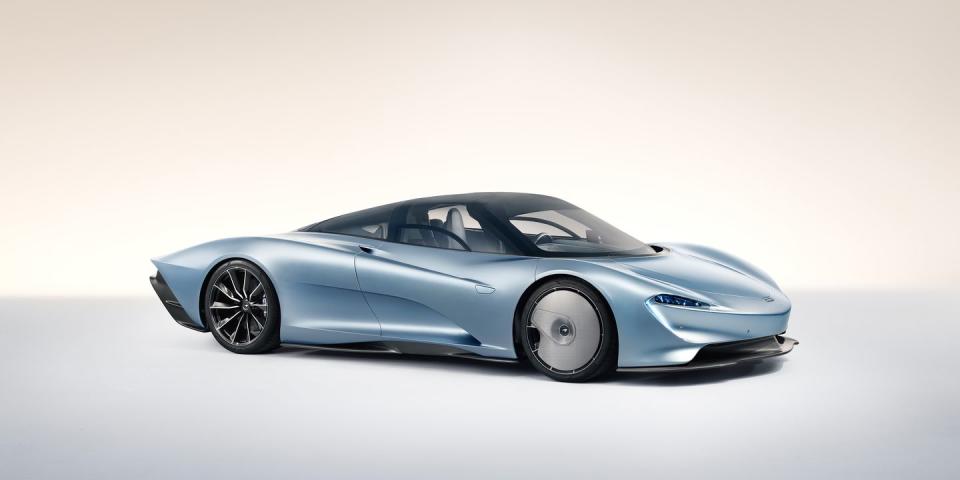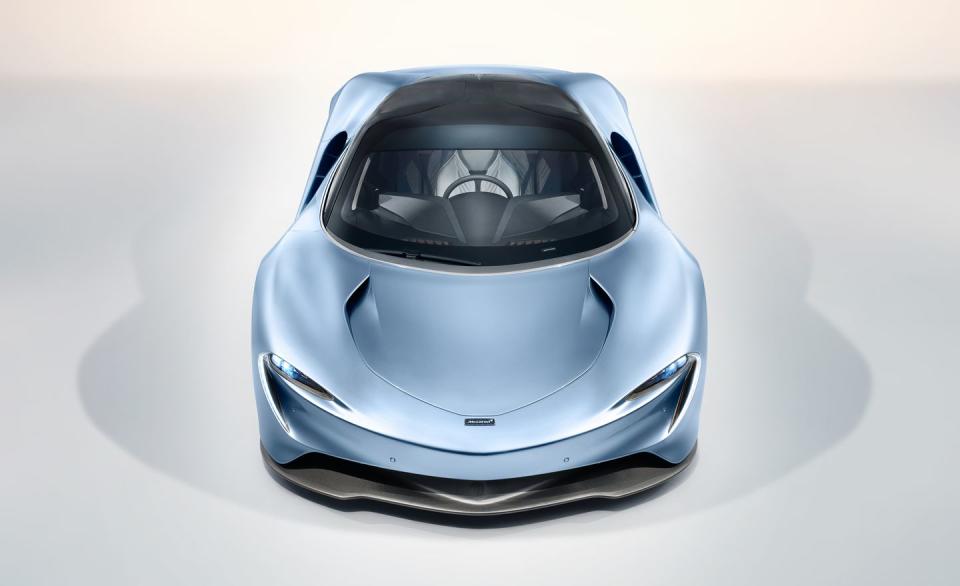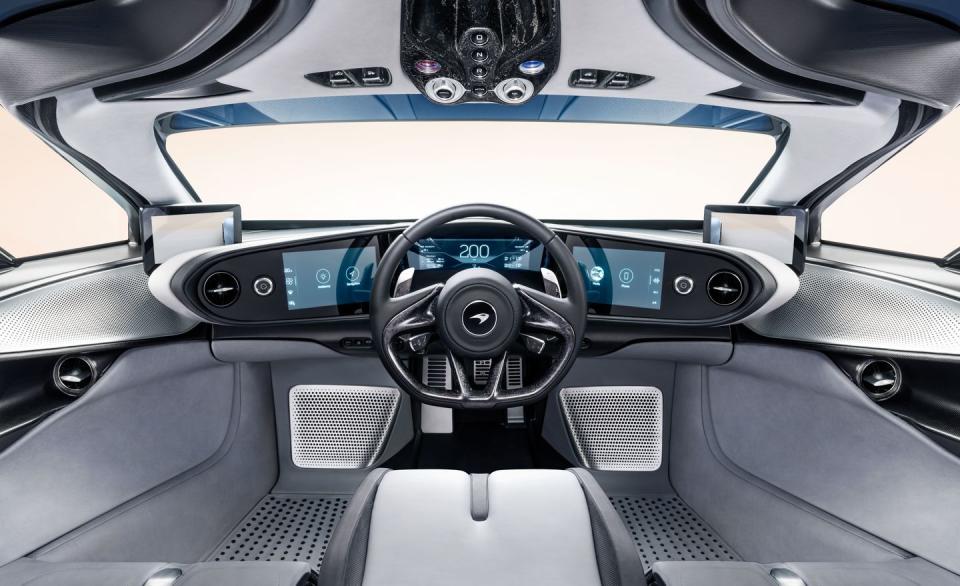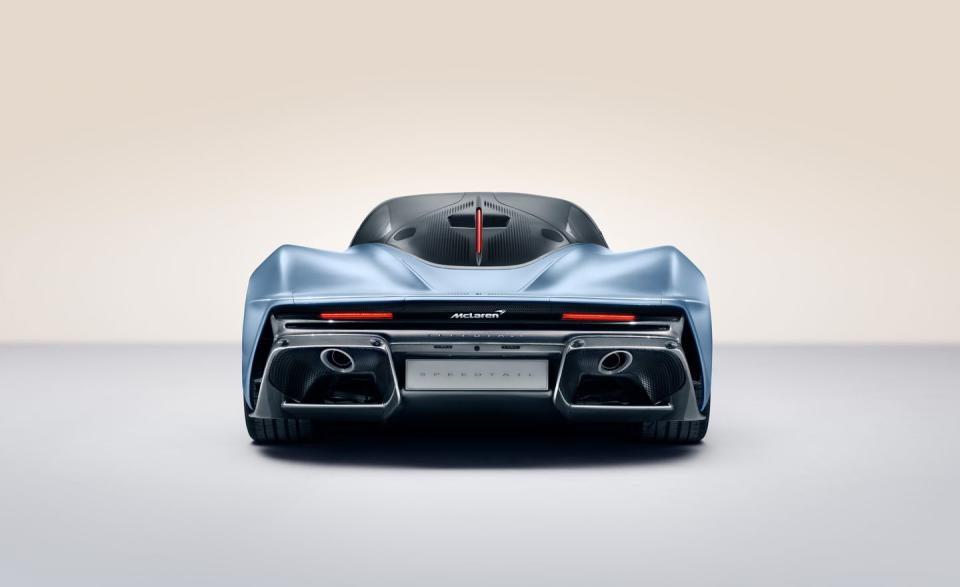The 2020 McLaren Speedtail Revealed!

While thrilling, supercars have long offered a strictly limited capacity to share the experience; indeed, the only way in most to carry more than one passenger is to form a pile on the passenger seat. The original McLaren F1 was a glorious exception to this rule, with an innovative triple-seat layout featuring a pair of setback pillion pews flanking a central driving position. Now, more than two decades later, McLaren has created a new model sharing the same three-wide layout with the Speedtail.
The ability to carry more people might stand as the most obvious distinction for this latest Ultimate Series offering, but there are several other reasons we should look upon it as the brand's pinnacle car, for now at least. It is the most expensive, at $2.1 million; the most powerful, with 1035 horsepower; and the fastest so far, with a claimed top speed of 250 mph. Just 106 will be produced, a number that matches the run of the original F1. We're told that around a third of those will be coming to the United States, even though the car won't be street legal; owners will have to bring cars in under the Show and Display exemption, McLaren told C/D.
It is a very different car from the track-focused Senna. It's more luxurious and less raw and, as such, is closer in spirit to the original F1, which was famously designed by Gordon Murray to work on the road rather than the track. McLaren remains coy on some of the technical details of how the Speedtail does its thing. But, with only the sketchiest details released about the new hybrid powertrain, the company is happy to quantify just how much better it is than its other recent offerings. We're told the Speedtail can accelerate from rest to 186 mph in just 12.8 seconds; the company's last hyperhybrid, the P1, took a sluggardly 16.5 seconds for the same benchmark.
The high-speed mission is obvious in the design, which features a wind-cheating teardrop shape and none of the Senna's aggressive wingwork; there are active elements within the rear clamshell that can subtly alter its shape to reduce drag or improve downforce as required. McLaren claims the Speedtail is its most aerodynamically efficient car to date in terms of drag, helped by its elongated tail-which contributes to an overall length of 202.2 inches-as well as its limited frontal area and its ability to sink closer to the ground at speed. The car's Velocity mode, in which it reaches its maximum speed, reduces ride height by 1.4 inches, leaving the highest point of the car just 44.1 inches above the road surface.
The Speedtail also gets a rearview-camera system in place of conventional door mirrors. Narrow arms carrying cameras sprout from each of the doors, and images are relayed to screens on either side of the driver. In Velocity mode, these arms motor themselves into the door to reduce drag. Other notable aerodynamic innovations include carbon-fiber "aero covers" for the front wheels; they remain in place as the wheels turn to help smooth airflow in what is normally a turbulent area.
Beyond telling us that the Speedtail is a hybrid and saying that the gasoline and electric sides of the system combine their efforts to drive the rear wheels, McLaren has held off on details of the powertrain, including the relative quantities of internal-combustion and electric power. Despite that, we're confident that the Speedtail is using a version of the same twin-turbocharged V-8 that powers the rest of the McLaren lineup. We would speculate that it is producing a similar output to the 789-hp Senna, augmented by an electrical motor adding assistance upstream of the transmission, which is almost certainly McLaren's seven-speed dual-clutch gearbox.
Cabin materials are considerably plusher than the carbon-fiber crypt that is the Senna's interior. Most of the Speedtail's cabin is trimmed in leather, with much of it being a new lightweight material with reduced-density hides to cut weight by up to 30 percent. The central driving seat incorporates "directional" leather, which is designed to make it easy to slide into position but then holds an occupant firmly in place. Touchscreens have replaced almost all conventional switchgear, except for the engine start button, the window switches, and the buttons to engage Velocity mode and switch on the Active Dynamics panel. There are no sun visors; instead, there's a strip of electrochromic glass (similar to that used in some modern airliners) that can be darkened as required, as can the side windows and the glazed porthole above the driver's head. We don't have figures for the amount of luggage space, but McLaren promises it will offer a set of fitted bags to help owners make the most efficient use of what space there is.
In addition to a carbon-fiber tub, the Speedtail gets carbon bodywork, including a new material that incorporates titanium weave to give a chrome-effect shimmer. Buyers will be able to specify pretty much any trim color, both inside and out. Although heavier than the Senna, the Speedtail is still remarkably svelte for something offering this level of performance: McLaren says it weighs 3153 pounds without fluids, 511 more than the number it quoted for the Senna.
It seems strange that an idea as good as a three-seat supercar had not been seriously revisited since McLaren gave up on its first one. It took McLaren Cars (precursor to the current McLaren Automotive) five years to make 106 F1s. By contrast, the entire allocation of 106 Speedtails sold out before buyers could even see an image of the finished car, let alone sit in one, and more than a year before the first ones will be delivered, in the first quarter of 2020. How things change, and yet how things stay the same.
('You Might Also Like',)

 Yahoo Autos
Yahoo Autos 


